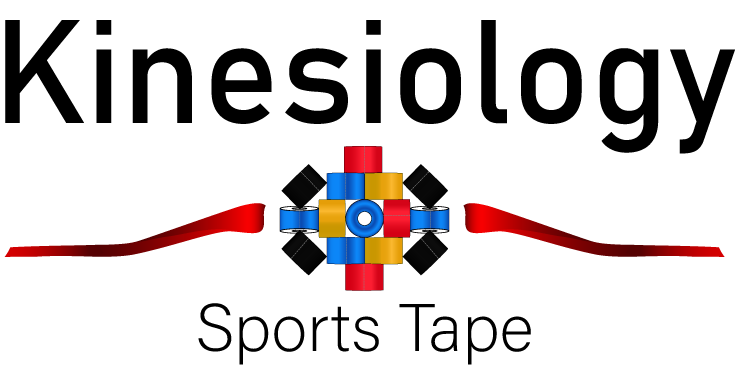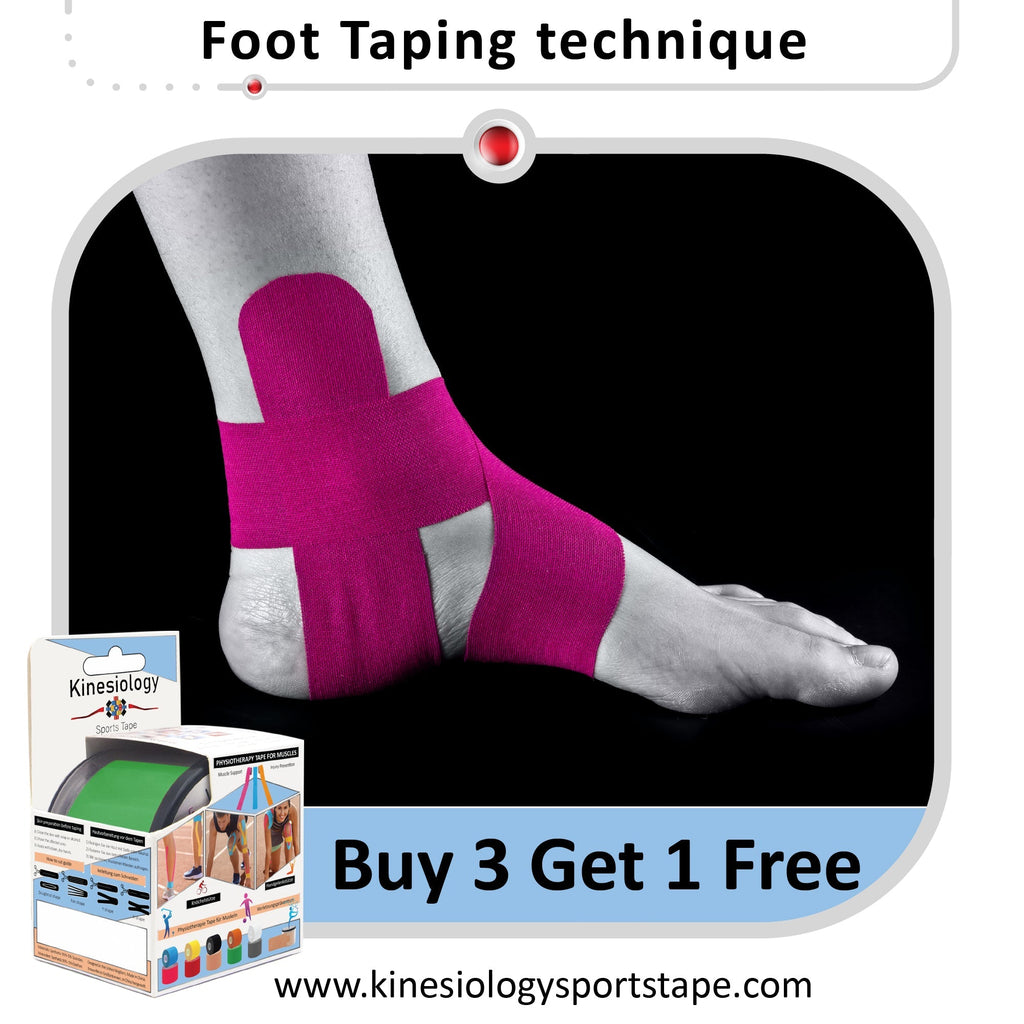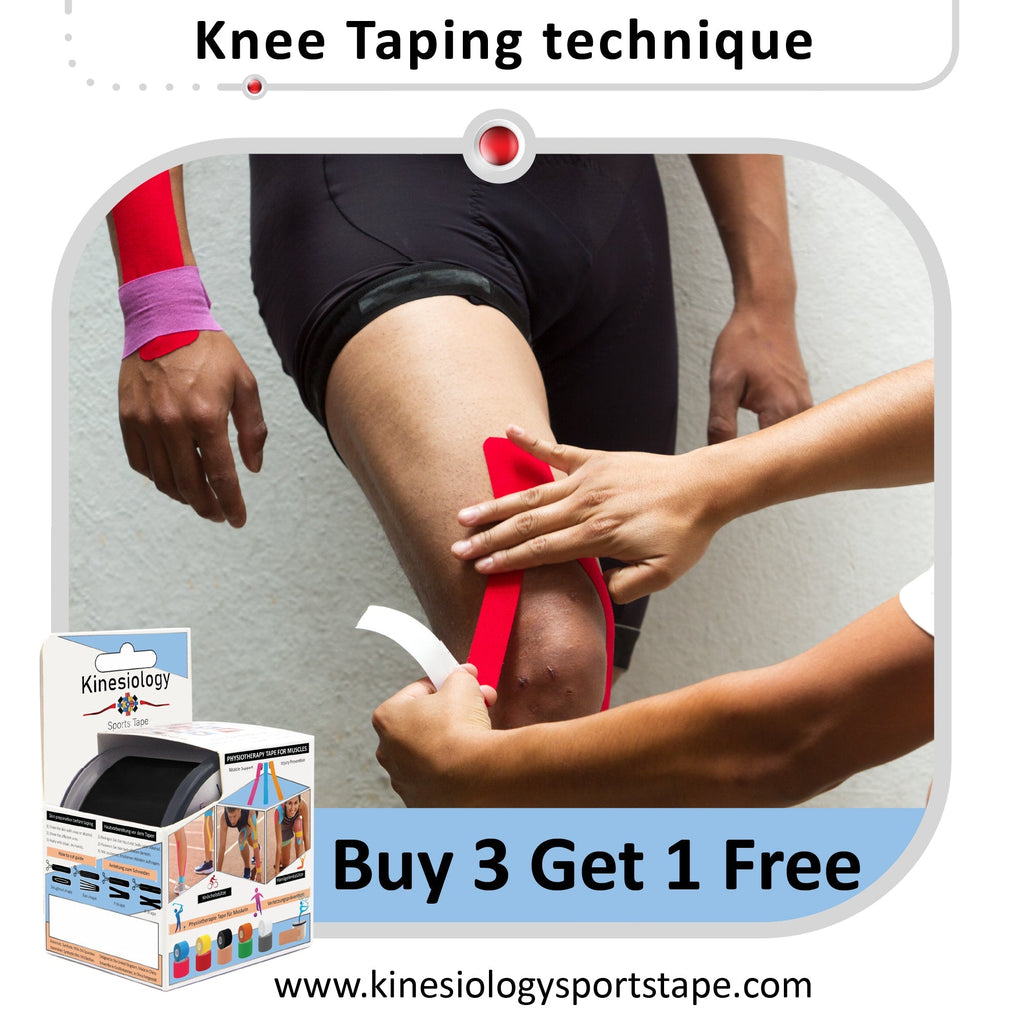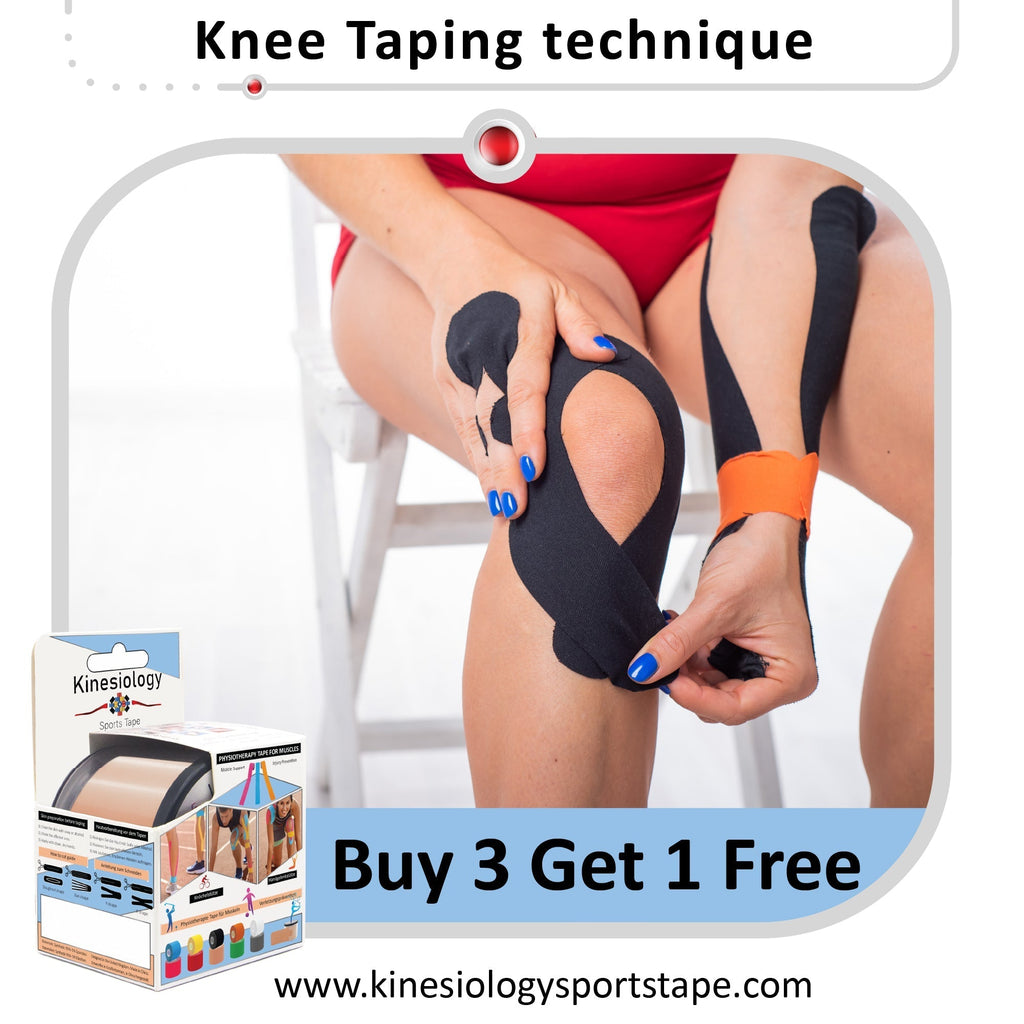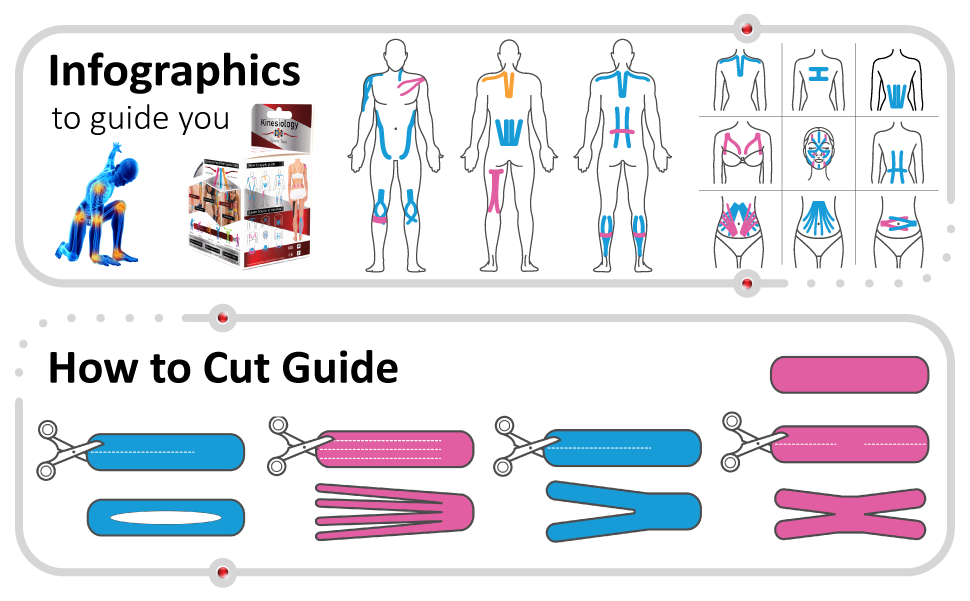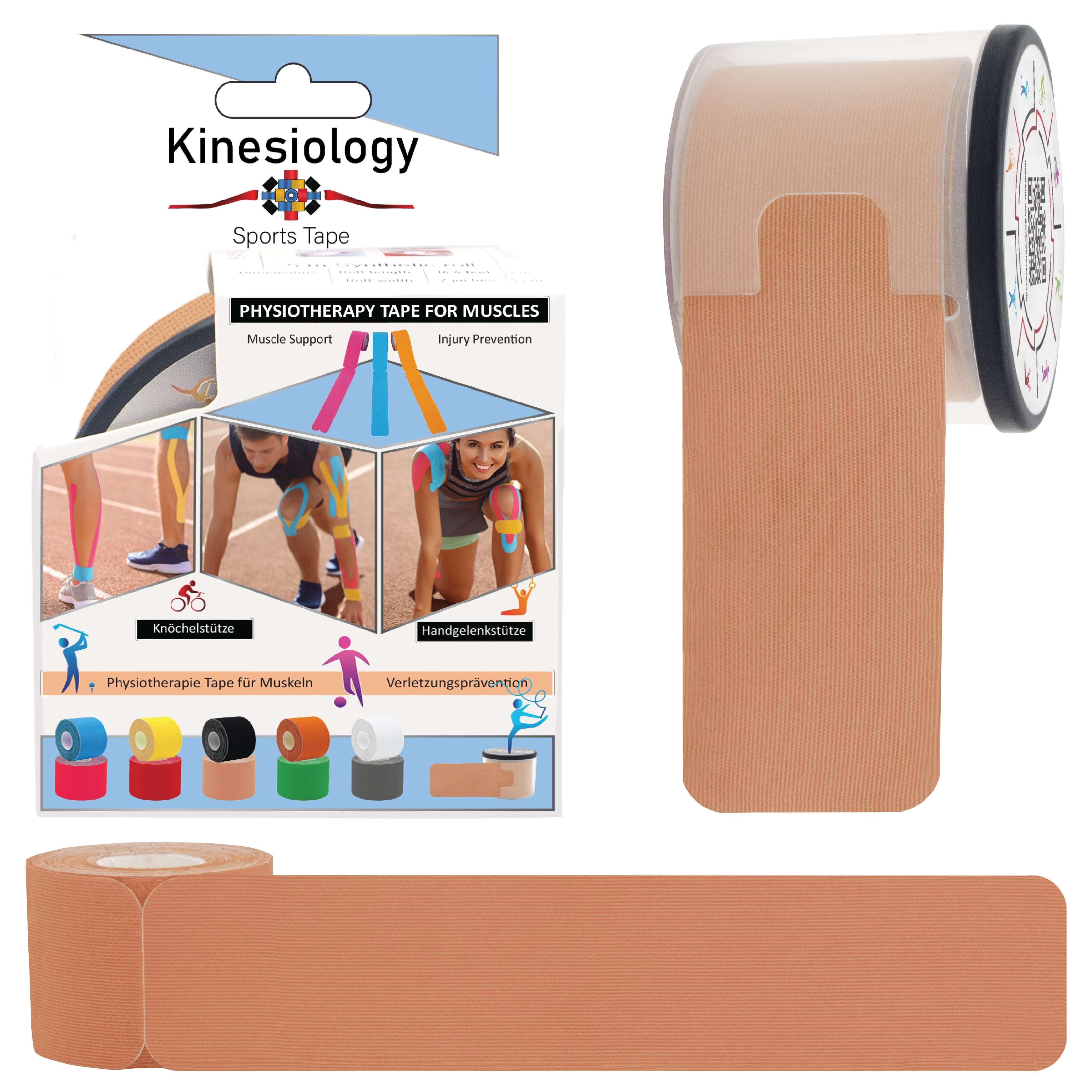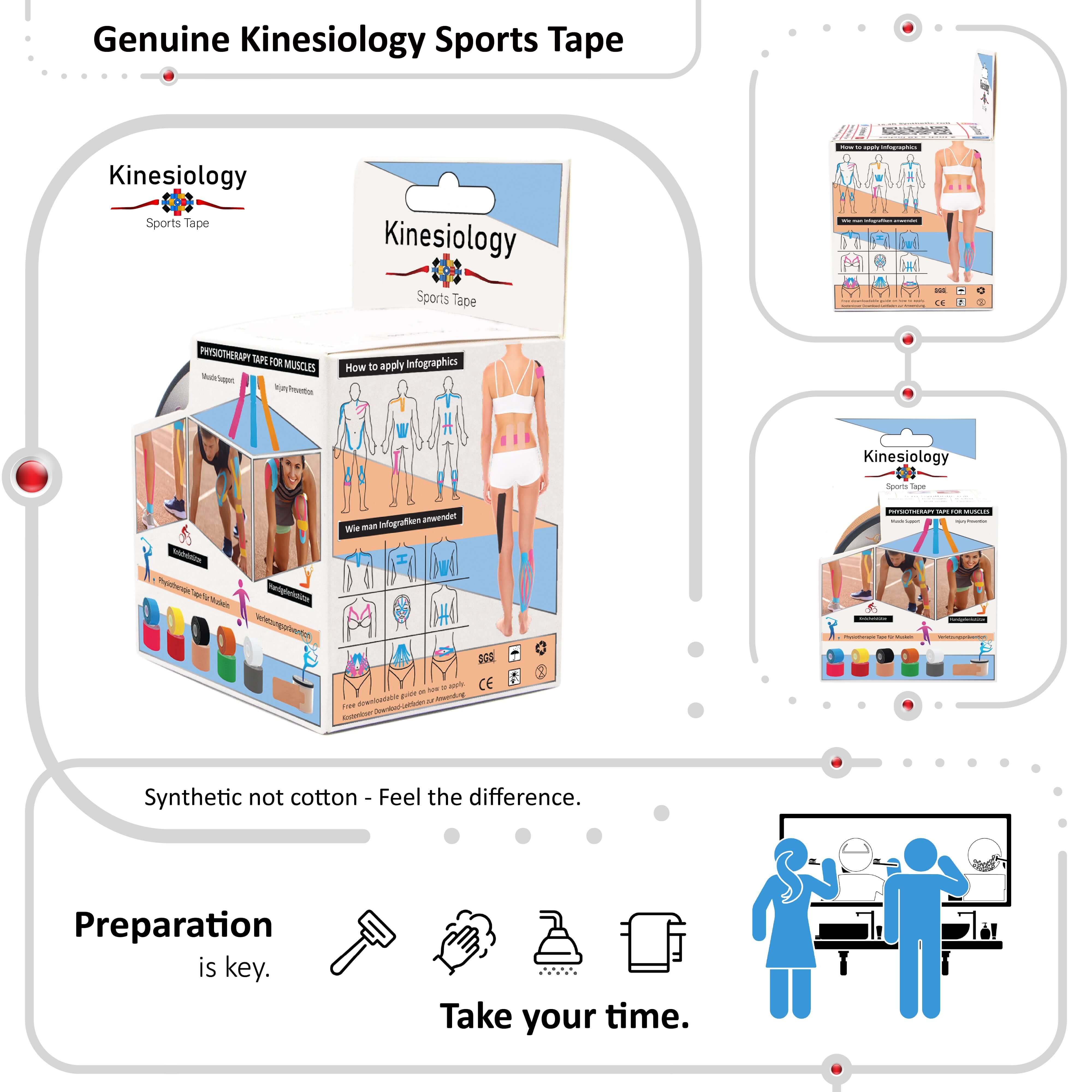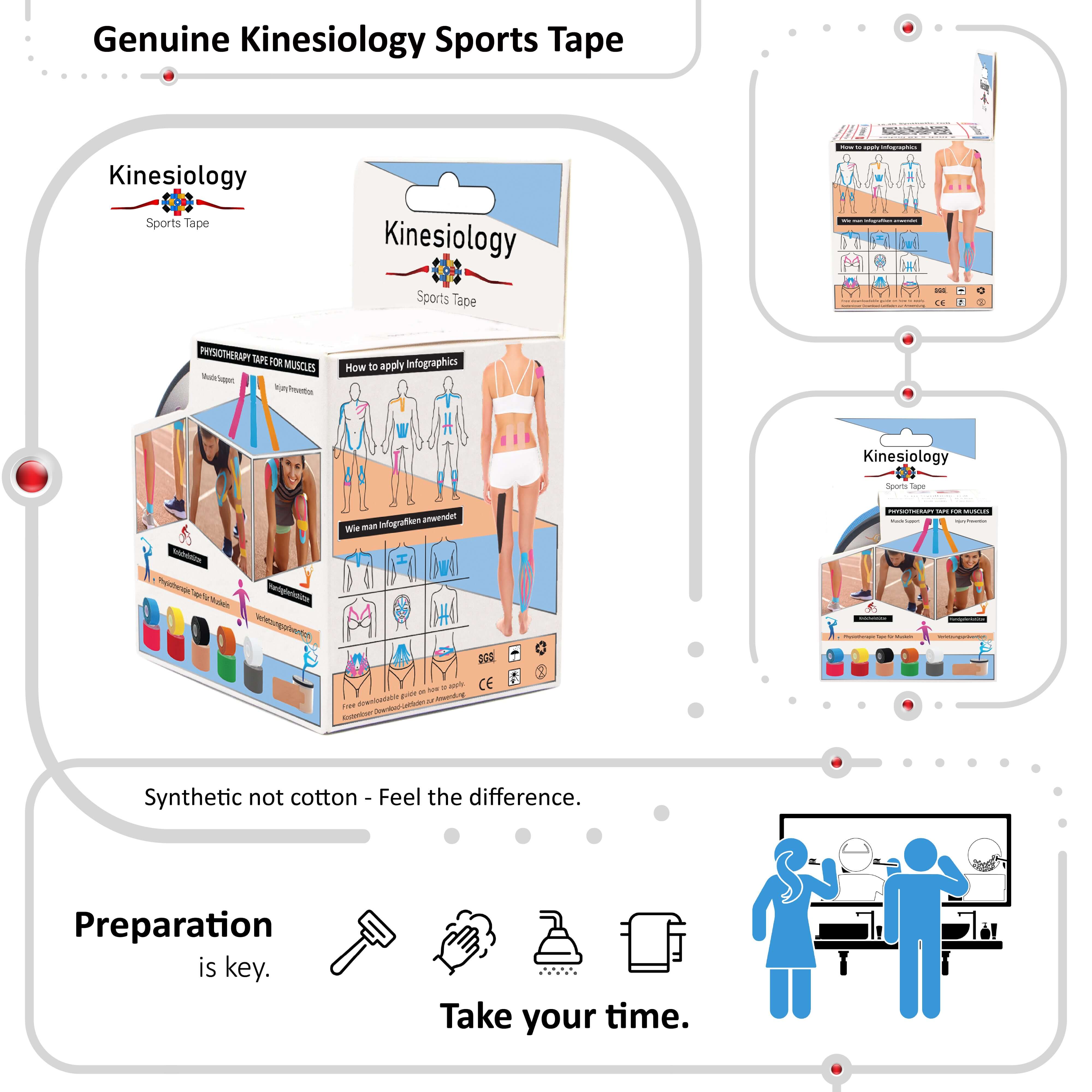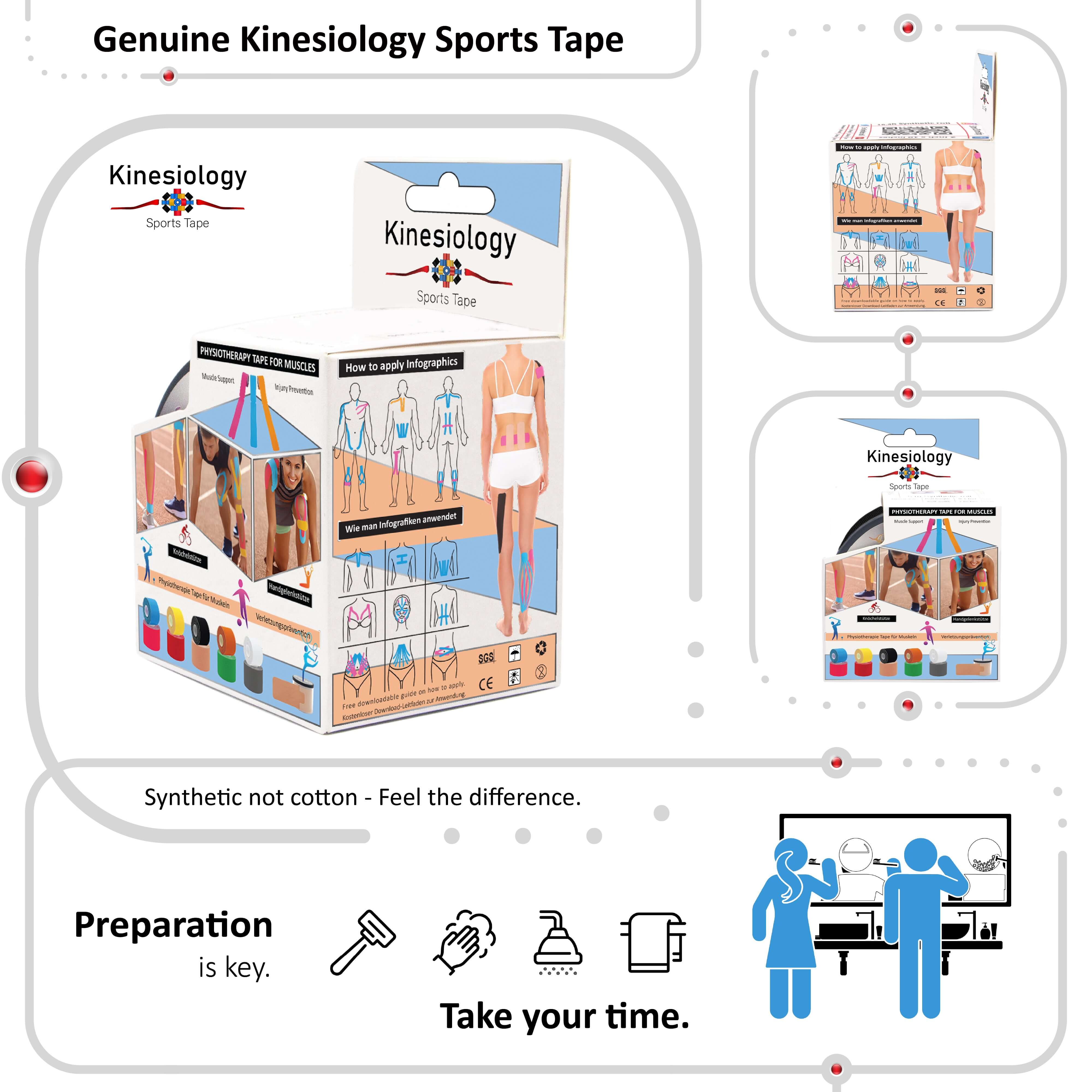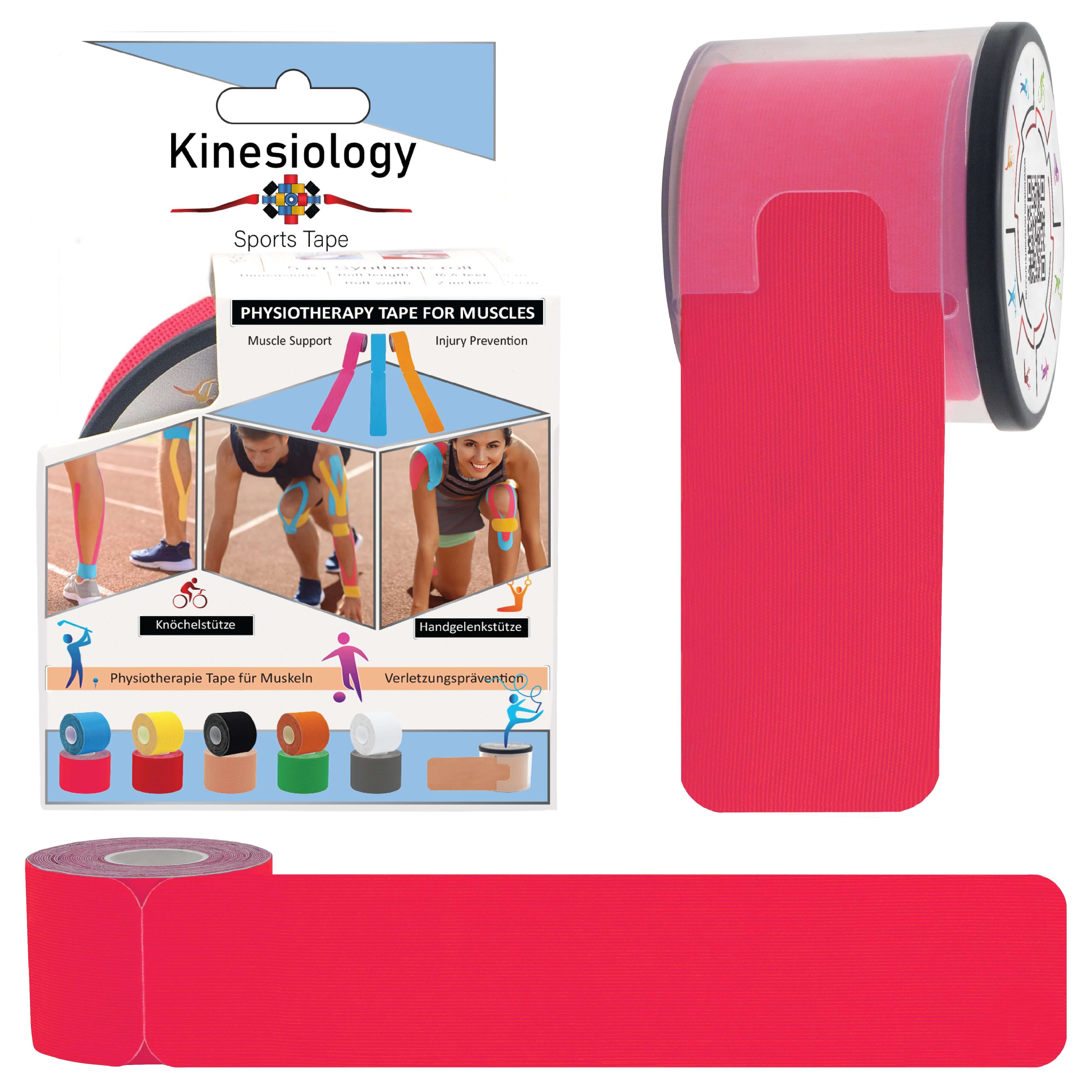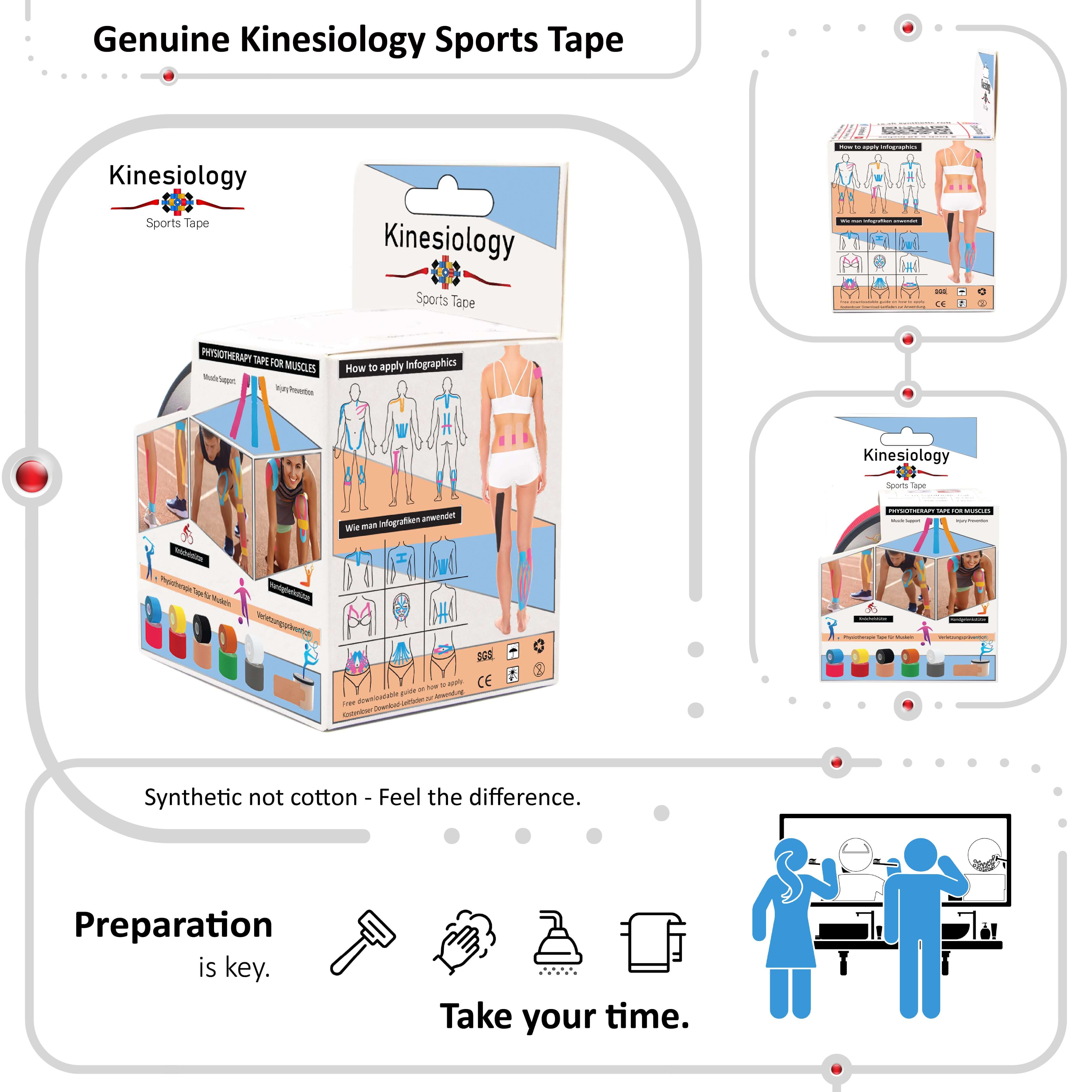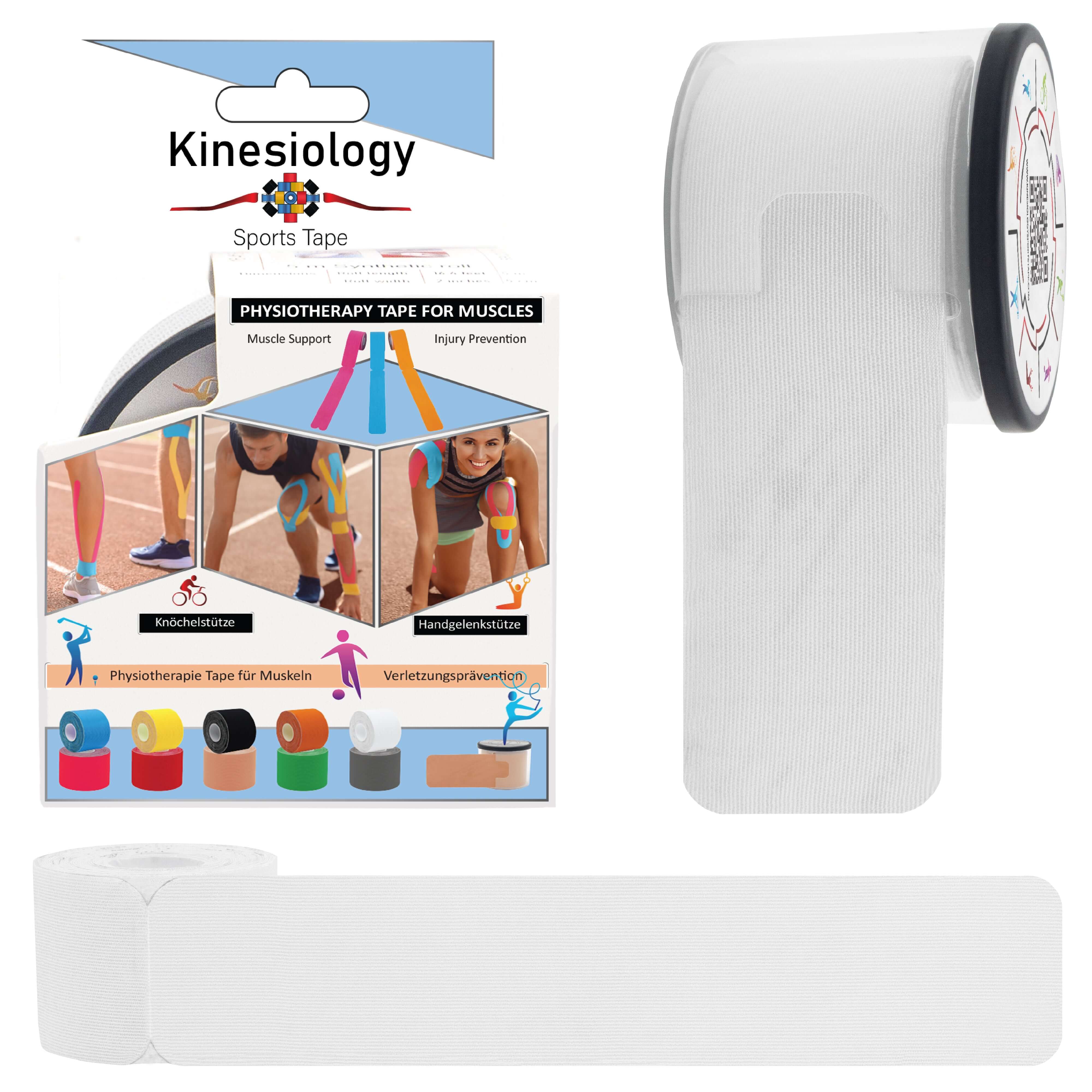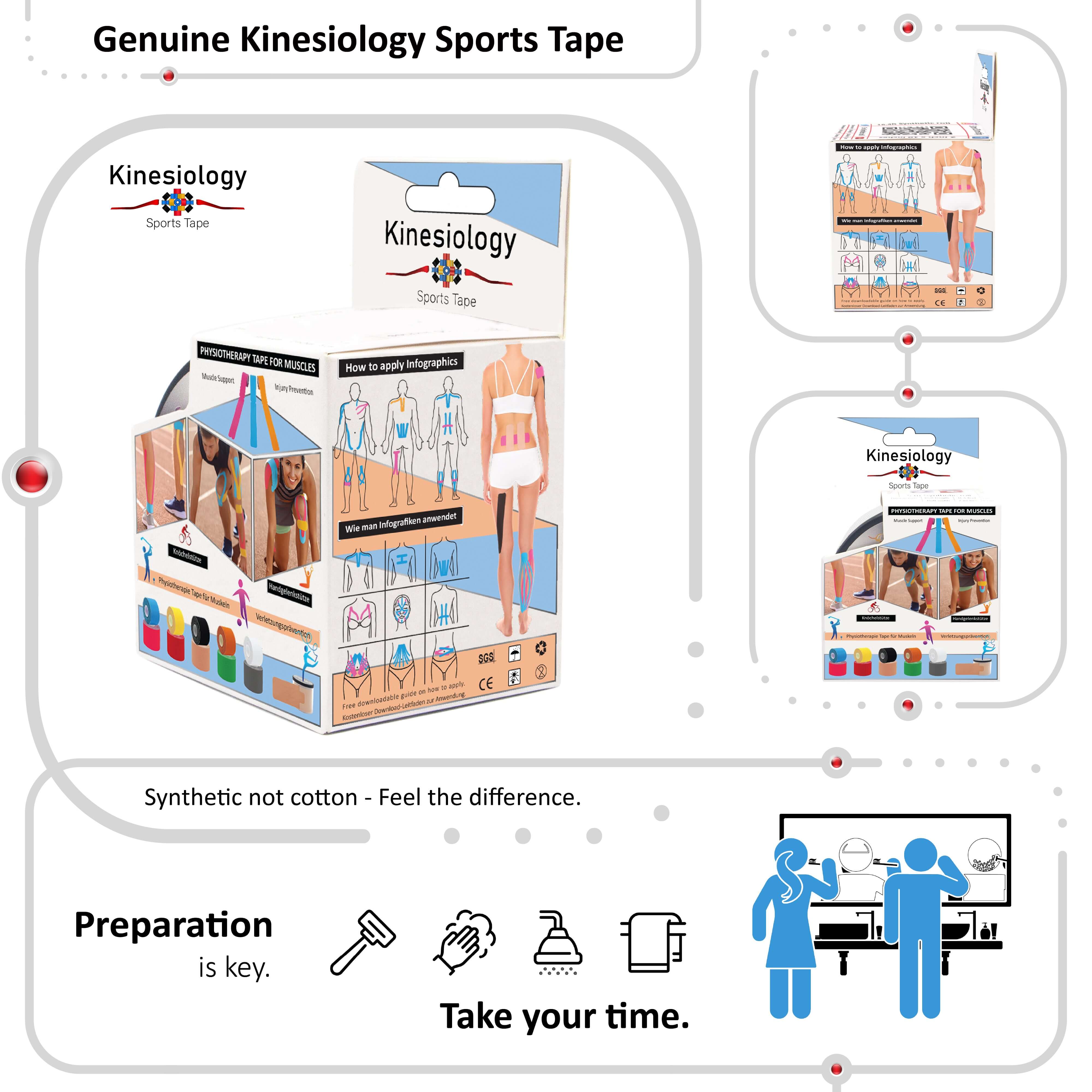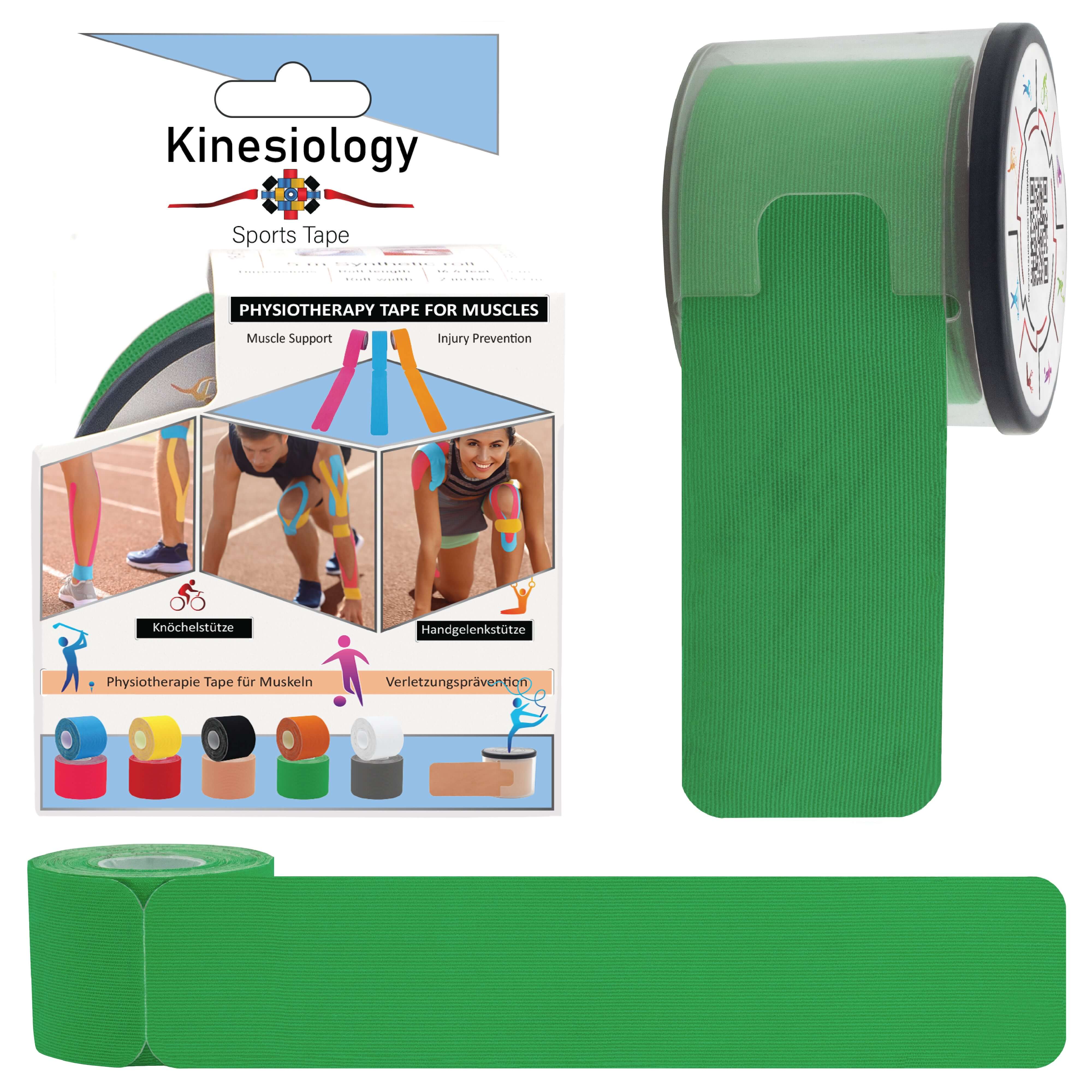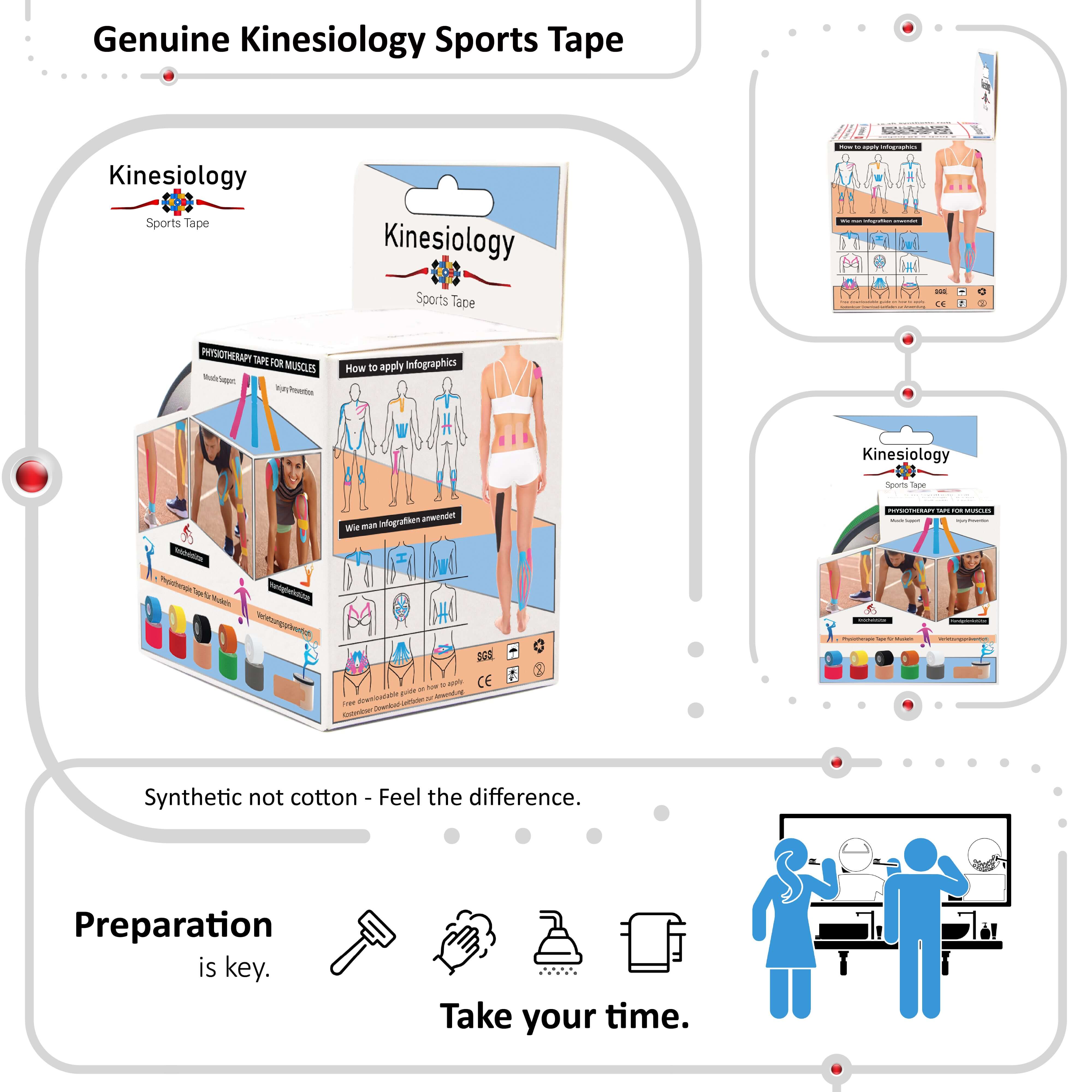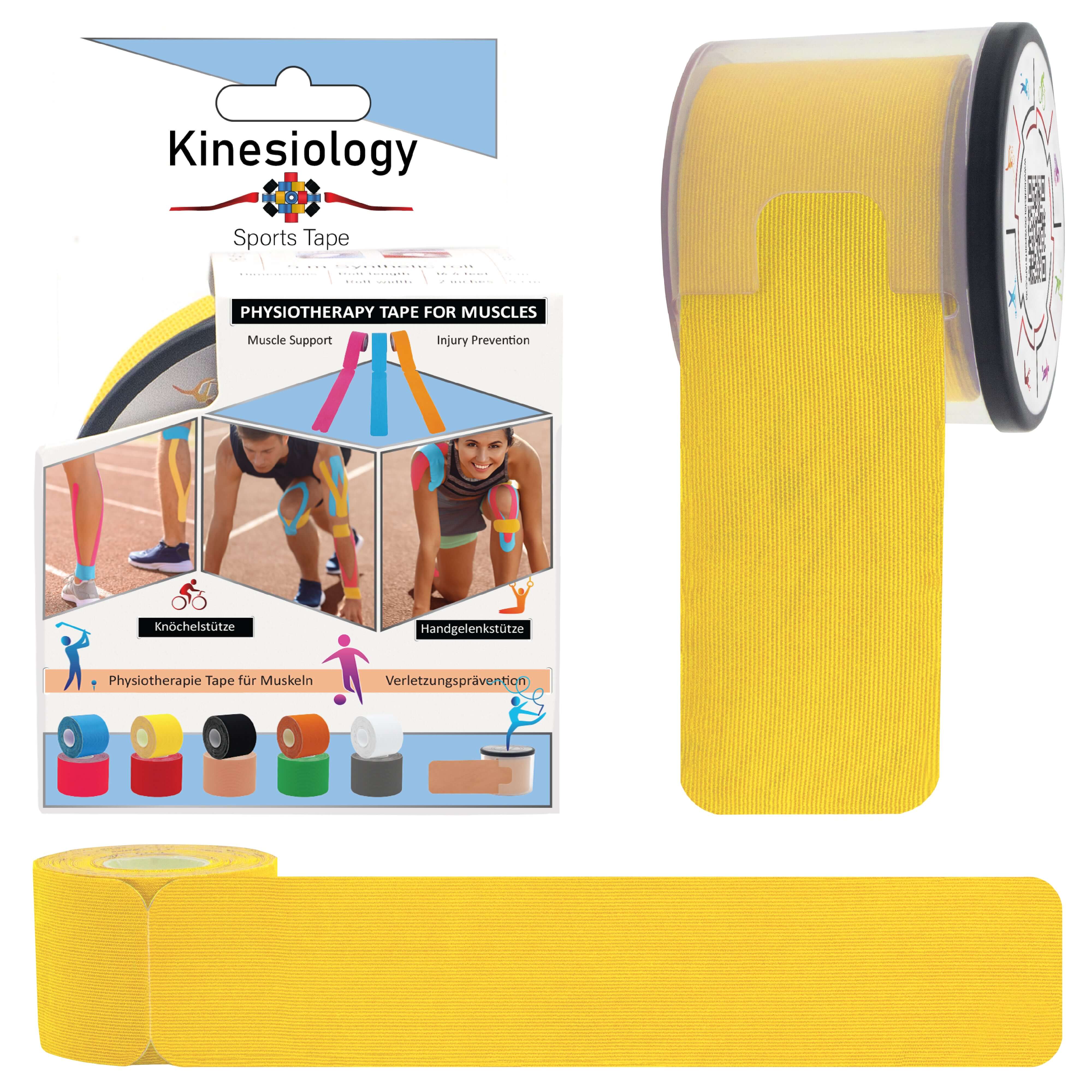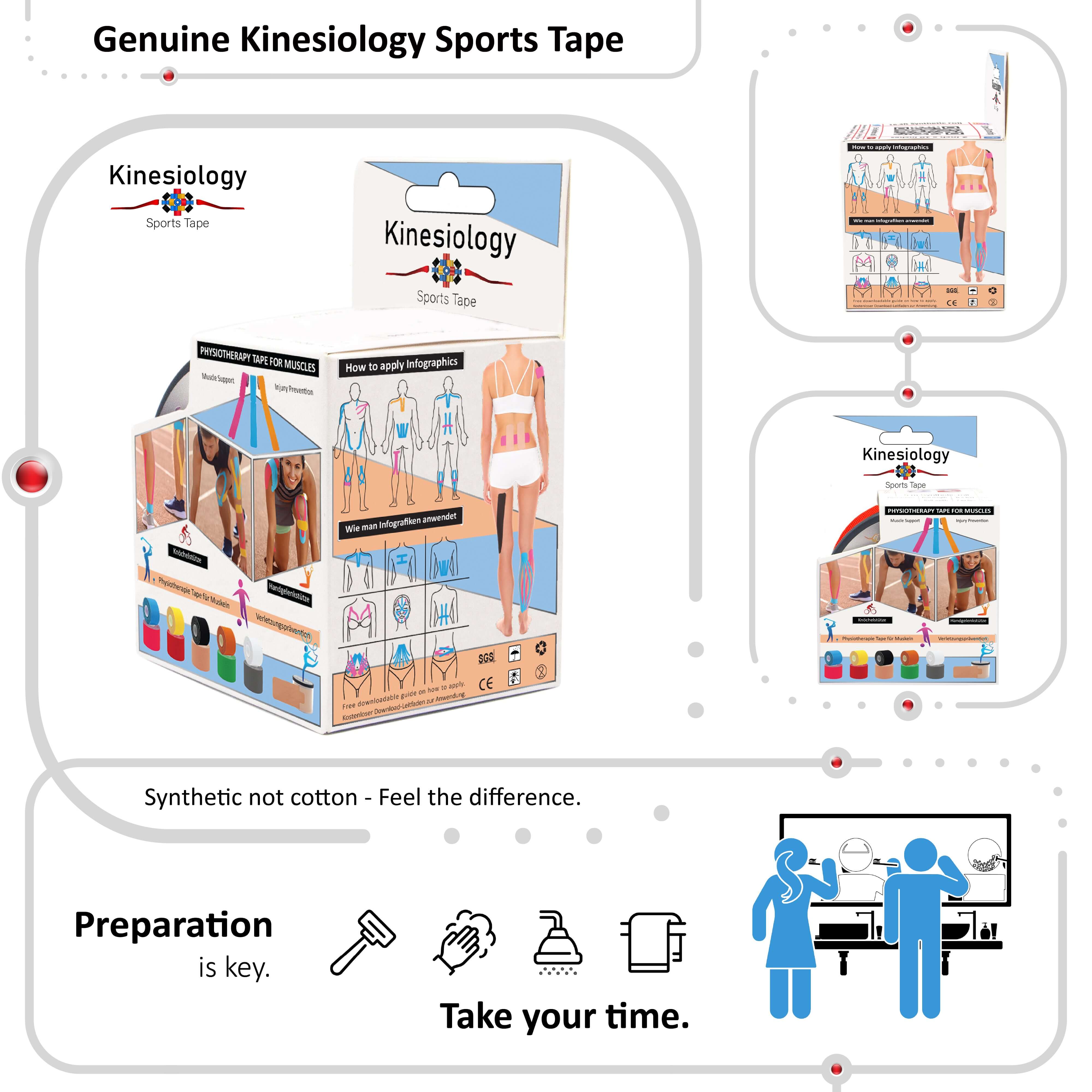
Kinesiology tape before and after

Kinesiology tape, with its vibrant colors, has become a fixture on athletes and everyday people alike. But what happens before and after you apply the tape? This blog delves into the world of kinesiology tape, exploring the preparation process, application techniques, and what to expect after the tape is applied.
Before You Apply:
Preparation is key for a successful kinesiology tape experience. Here's what to do before reaching for the tape:
- Gather your supplies: You'll need kinesiology tape, scissors (optional, for rounding corners), rubbing alcohol to clean the application area, and a towel for drying.
- Identify your target area: Whether it's a sore knee, a tweaked shoulder, or lower back pain, pinpoint the area you want to address with kinesiology tape.
- Prep the area: Clean the application area with rubbing alcohol and pat it dry. Moisture can affect the tape's adhesion.
- Understand your goals: Are you seeking pain relief, improved proprioception (body awareness), or support for a specific movement pattern? Knowing your goals will guide your application technique.
The Art of Application:
Kinesiology tape application techniques vary depending on your desired outcome. Here's a breakdown of two common approaches:
-
I-Strip application: This basic technique offers general support and pain relief.
- Relax the muscle: Apply the tape with the muscle in a relaxed state.
- Stretch and apply tension: Gently stretch the muscle slightly while applying moderate tension to the tape as you roll it onto the skin.
- Anchor the ends: Apply both ends of the tape with no stretch for optimal adhesion.
-
Y-Strip application: This technique targets specific points or improves range of motion.
- Anchor placement: Apply the anchor end of the Y-shaped tape at the origin or insertion point of the muscle (where the muscle connects to the bone).
- Following the muscle belly: The branches of the Y should follow the muscle belly without applying tension to the tape.
Beyond the Basics:
Numerous online tutorials and resources offer a wealth of information on various application techniques for specific conditions. Additionally, consider consulting a physical therapist or athletic trainer for personalized instruction on applying kinesiology tape for your needs.
After You Apply:
Once the tape is applied, here's what to expect:
- Activation vs. Inhibition: Kinesiology tape can be applied to activate weak muscles (applying tension while stretching) or inhibit overactive muscles (applying no tension).
- Wear time: Kinesiology tape can typically be worn for several days, depending on your activity level and skin sensitivity.
- Removal: To remove kinesiology tape, gently peel it off in the direction of hair growth. You can use some baby oil to ease the process if needed.
Important Considerations:
- Listen to your body: Kinesiology tape shouldn't cause discomfort. If you experience any pain or irritation, remove the tape and consult a healthcare professional.
- Reapplication: Kinesiology tape can lose its adhesive properties over time. You may need to reapply the tape after a few days, depending on your activity level and the specific application.
- Not a magic bullet: Kinesiology tape is a complementary therapy, not a replacement for proper medical diagnosis and treatment. Consult a healthcare professional for any pain or injuries you're experiencing.
The Kinesiology Tape Journey:
Kinesiology tape offers a potentially valuable tool for pain management, improved proprioception, and supporting specific movement patterns. By understanding the preparation process, different application techniques, and what to expect after application, you can embark on a successful kinesiology tape journey.
